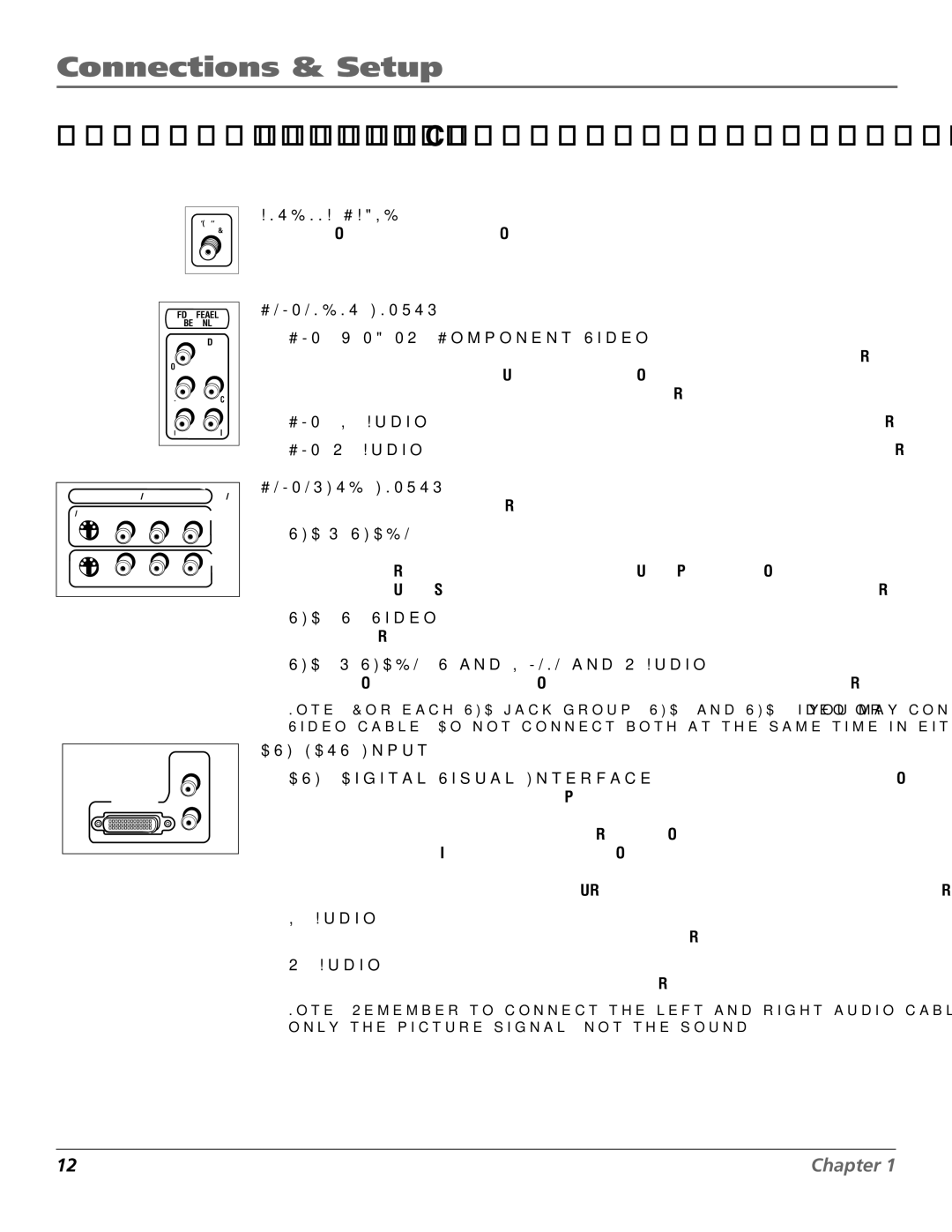
Connections & Setup
Explanation of Jacks (in alphabetical order)
This section describes the jacks on the back panel of your TV/DVD. There are several ways to connect components.
��������
�����
ANTENNA/CABLE Lets you connect a coaxial cable to receive the signal from the antenna, cable, cable box, or if using the examples on pages
���������
�����
![]() ����
����
�
�� �
�� �
����������������
������� � � � ����
����
� � �
COMPONENT INPUTS Lets you connect a component video source, such as a VCR.
•CMP1 Y PB PR (Component Video) Provides optimum picture quality because the video is separated into three signals. Use three
•CMP1 L (Audio) Provides left audio connection. The left audio connector is usually white.
•CMP1 R (Audio) Provides right audio connection. The right audio connector is usually red.
COMPOSITE INPUTS Lets you connect another component such as a VCR, DVD player, or laserdisc player. Its AUDIO jacks are the same as described for CMP1 above.
•VID1
•VID1 V (Video) Provides composite video connection. The video connector is usually yellow.
�������� �
�
• VID2
Note: For each VID jack group (VID1 and VID2), you may connect either an
•DVI (Digital Visual Interface) Provides an uncompressed, digital video interface developed for
•L (Audio) Provides left audio connection when using the DVI jack. The left audio connector is usually white.
•R (Audio) Provides right audio connection when using the DVI jack. The right audio connector is usually red.
Note: Remember to connect the left and right audio cables because the DVI cable carries only the picture signal, not the sound.
12 | Chapter 1 |
